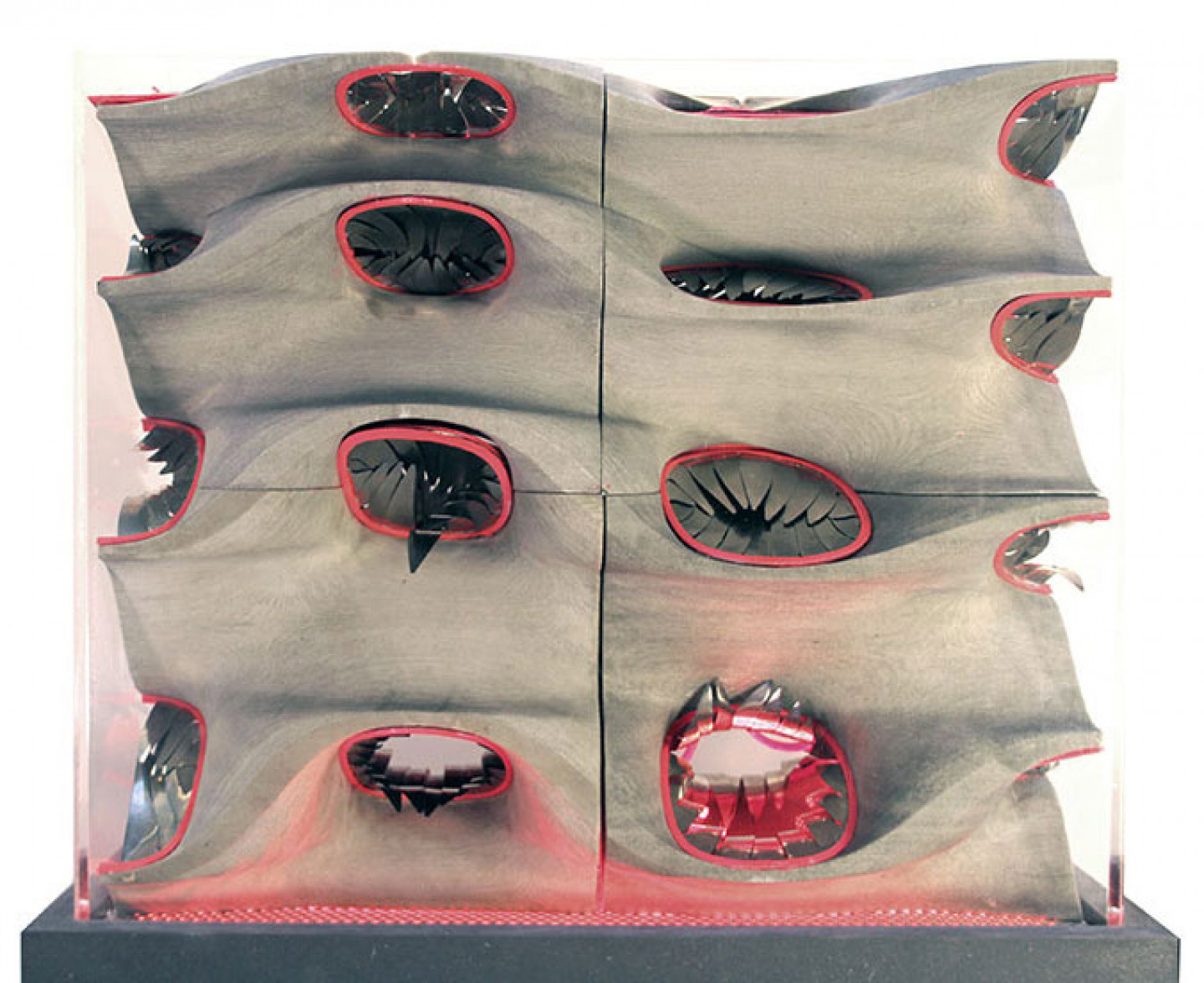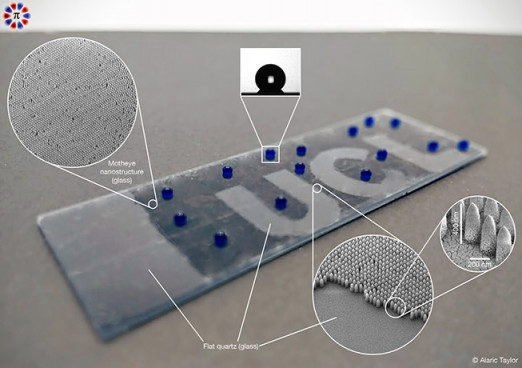Traditional concrete blocks are not designed to breathe. They are made relatively solid and designed to be stacked quickly and cheaply. Because the fabrication of these cast blocks require reusable molds, it is impossible to make complex shapes that have hidden corners or shapes. With digital-to-digital technology developed in rapid prototyping or three-dimensional printing, the concept of mass-production in concrete blocks can be reconsidered into one of mass-customization where every single unit is different. Each block can be its own complex shape and scale, while new materials, like concrete polymer, can be explored in this innovative process.
In the case of Tracheoles, the breathability of the block is achieved by incorporating a complex cavity system that is similar to the trachea system of grasshoppers, who breathe through spiracle holes in their sides. In order to allow the movement of hot air through the continuous spaces, smart plugs are strategically positioned.
They are made of thermobimetal, a lamination of two metals with different coefficients of expansion. When heated to a designated temperature, one of the metal sides will expand more than the other, resulting in a curling action. Without controls or external energy source, this “smart” response can be harnessed to operate automatically and indefinitely to self-ventilated spaces that are overheated. When the temperature is cold, the sensitive, digitally laser-cut plugs flatten, constrict pertinent openings, trap air in the cavities and contribute to the overall insulating value of the concrete block system.
Lead Designer/Researcher:
Doris Sung Principal, DOSU Studio Architecture
Assistant Professor, University of Southern California
Team:
Evan Shieh, Dylan Wood, Dennis Chow
Concrete Polymer 3d Printing:
Ron Rael, Principal, Emerging Objects
Grant support:
ARS Electronica
Doris Sung

In 1999, she opened her office, dO|Su Studio Architecture, and soon received many AIA and ASID awards for her work, including the prestigious accolades of AIA Young-Designer-of-the-Year, ACSA Faculty Design Award, R+D Honorable Mention from Architect Magazine and [next idea] award from ARS Electronica.
Currently, she is working on developing smart thermobimetals and other shape-memory alloys, unfamiliar materials to architecture, as new materials for the "third" skin (the first is human flesh, the second clothing and the third architecture). Its ability to curl when heated allows the building skin to respond for purposes of sun-shading, self-ventilating, shape-changing and structure-prestressing. Her work has been funded by the national AIA Upjohn Initiative, Arnold W. Brunner Grant, Graham Foundation Grant, Architectural Guild Award and USC ASHSS and URAP Awards. Her TEDxUSC talk is available on ted.com.




_s_(002).jpg)
.jpg)